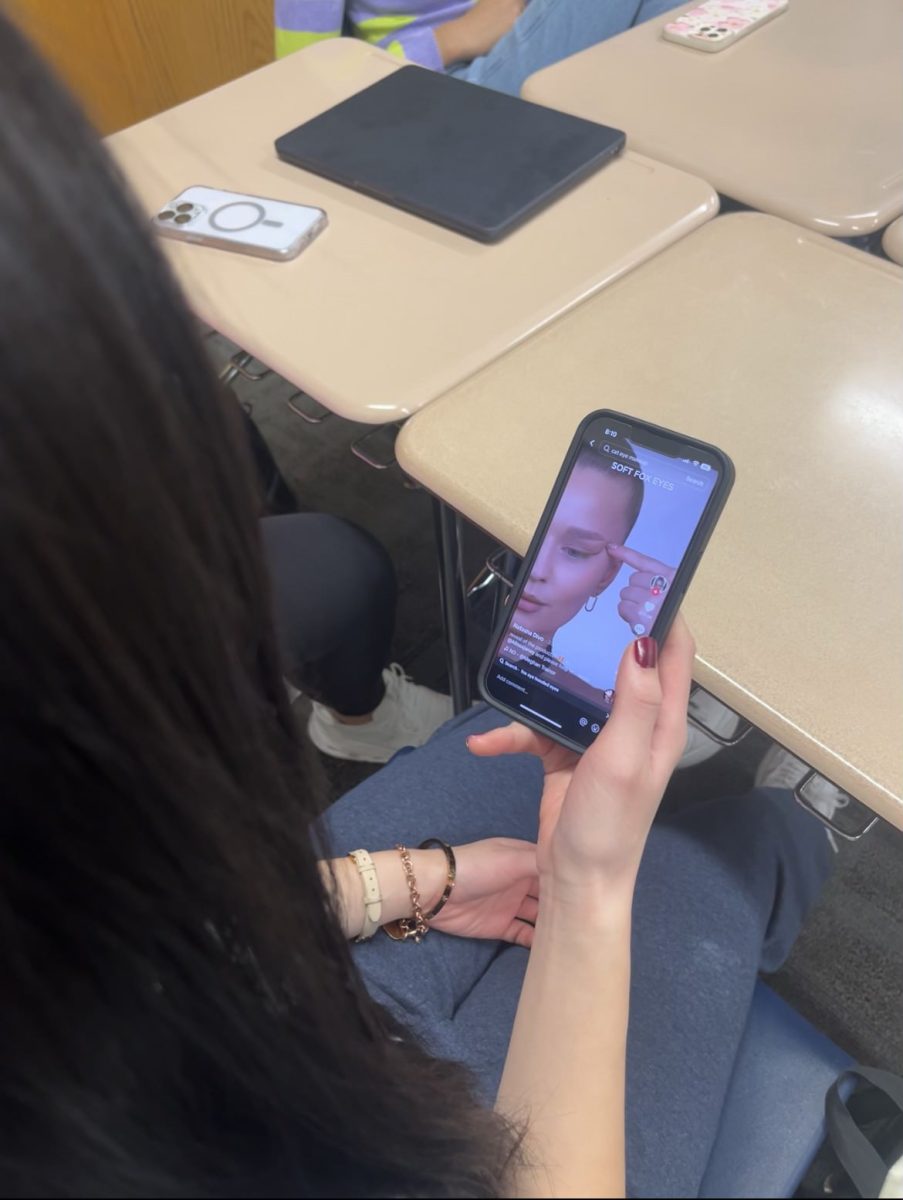There are no set rules for the standards of beauty. Trends and favored traits shift over the years, but one factor remains the same: there is absolutely a preferred race in beauty.
Whether intentional or not, beauty standards have always revolved around European features. The preference for light colored hair and eyes is just the start of the obvious. Non-white people strive to look as “white” as possible. Straightening hair, bleaching skin and obtaining surgeries are frequent requests from Asian people.
Recent trends have exemplified society’s ethnocentrist ideology. The fox eye trend, where influencers use makeup to make their eyes look elongated and slanted up, caused many to feel mimicked. Many celebrities also pulled their eyes back without understanding the racist implications/history behind that action.
Junior Alika Cho has fallen victim to this ridicule and recognizes the insensitivity of the trend. “I specifically remember kids in elementary school pulling their eyes back to mock my Asian eyes even though my eye shape didn’t resemble that at all. However, the fox eye makeup look has been popular for a while and I can’t help but feel frustrated whenever I see it. It feels like the stereotypical Asian eye shape is being validated because white people finally think is cool, which is really degrading,” Cho commented.
The “clean girl aesthetic” also pirates a cultural norm that is often made fun of when used by Americans of color. The prime aspect of this aesthetic is integrating a slick back and oiled hairstyle paired with gold hoops. For years, people considered the slick back look as dirty and trashy, as it was usually seen on Black and brown women. Yet when white women “discover” this style and take part in the trend, it is seen as trendy and clean.
“Growing up in India, is it common to put oil in our hair. Our Indian ancestors have been doing it for centuries, so this isn’t anything new,” junior Tanvi Devulapally explained. “When I moved to America, I used to beg my mom to not oil my hair, in fear of my classmates taunting me.”
As young as elementary, children are taught to abandon their culture in order to fit in to the American standard. By conforming, the youth loses its individuality and uniqueness. Cultural diversity is vital to retaining a sense of identity. Without acceptance of cultural features, individuals internalize the need to change themselves in drastic ways.
When freshman Shresta Bojja was growing up, young POC were taught to be ashamed of their skin color. “I always wanted to have lighter white. I wanted to fit in. But, now I see the same girls who made fun of my skin purposefully tan multiple shades darker than me. For them, tanning oils are their sought after product, but for me, bleaching and whitening products were recommended,” she said. While POC pour millions into skin whitening products and are told to avoid the sun in fear of becoming “too dark”, white people tan to deliberately achieve a bronzed shade. Tan skin on white people is perceived as exotic and rich, instead of foreign and dirty.
These so-called “trends” reinforce ethnocentric views, proving that society holds white women as inherently more beautiful than people of color.
One reason for the blatant racism is the lack of diversity in popular influencers and celebrities. Social media users often overlook influencers of color, leading to an inadequate representation of society. This also deprives youth of seeing someone with the same skin color or hair type as them. An inclusive social media platform leads to more users to be educated and proud about their features.
“There are so many components to east Asian culture such as KPop, anime and Asian food that so many people have faced backlash because it was seen as weird. The second white people began to indulge in these, it was normalized and even seen as cool. It is just really frustrating because it feels like Asian culture, along with many other cultures, is seen as weird or gross until white people start globalizing it,” Cho expressed.
The bar is set higher for POC, and reaching the expectations of society seems distant. Navigating what is tolerable in society solely based on the race of a person is unacceptable. White women appropriate the features of minorities yet give no reference to their origins, claiming the looks for themselves. The only difference between ridicule and the beauty standard is the race of face of these looks.









